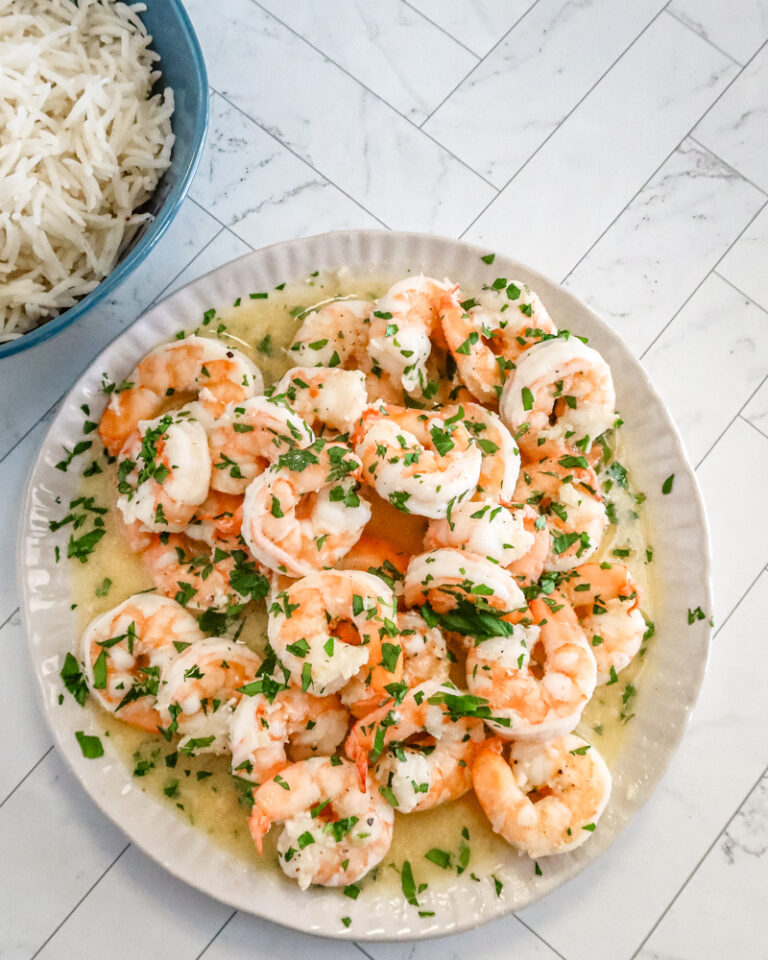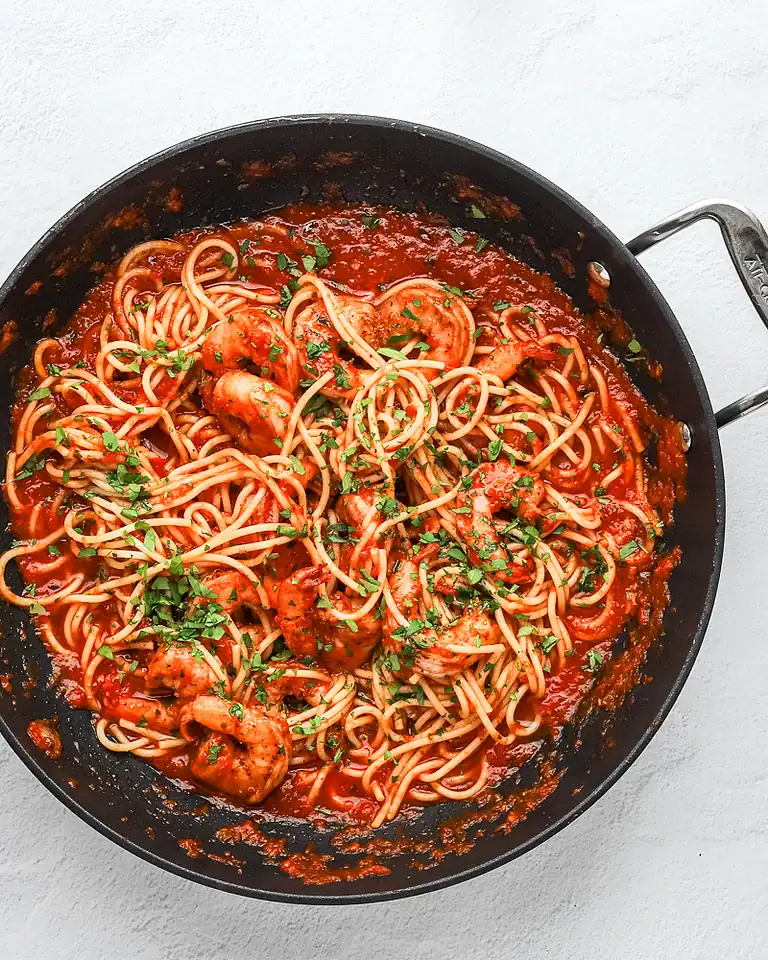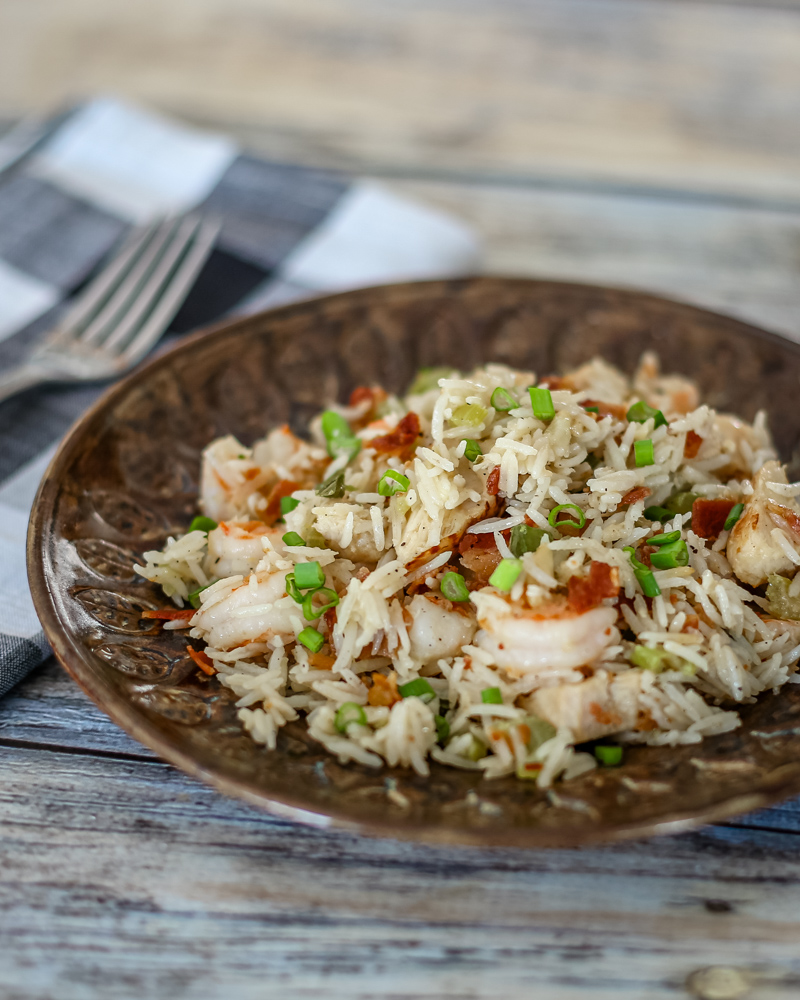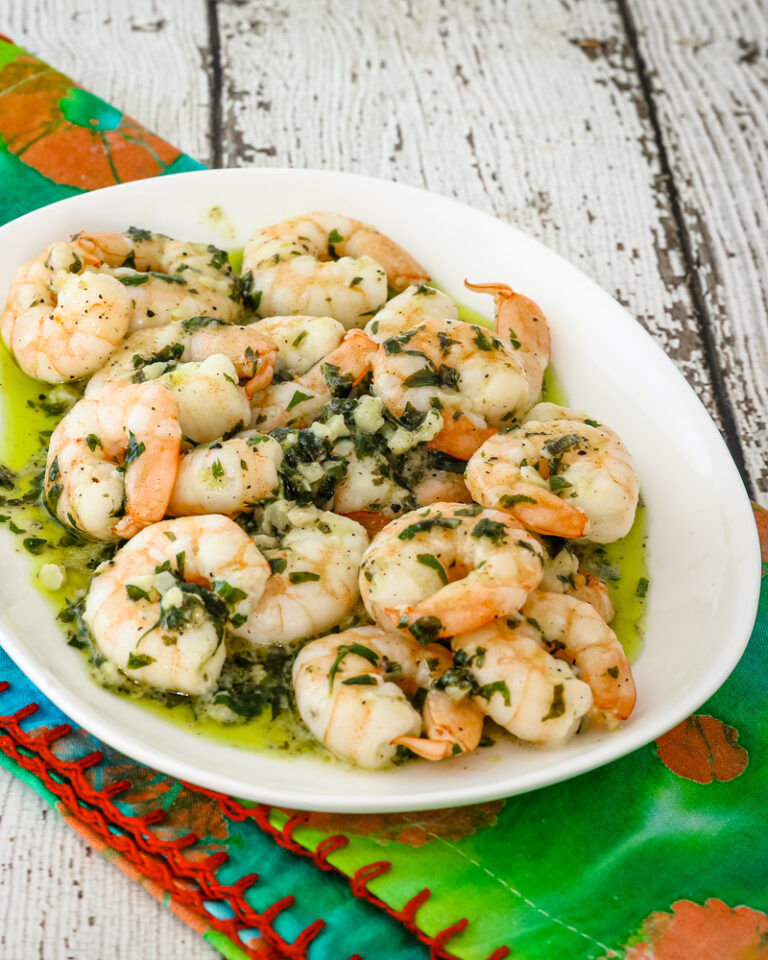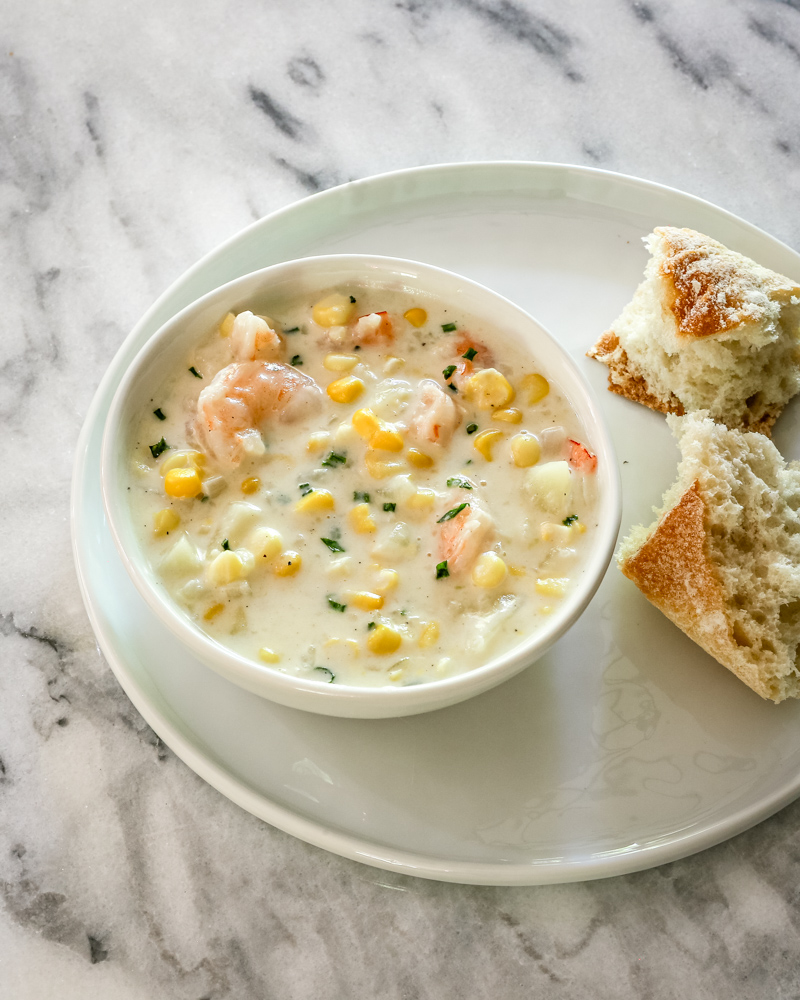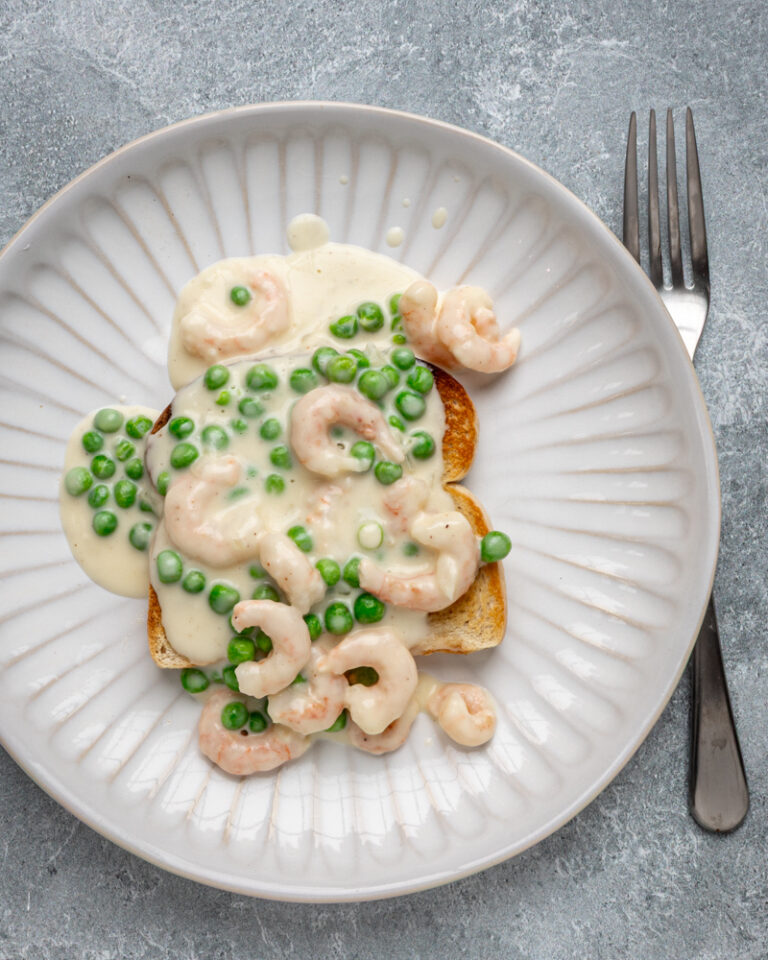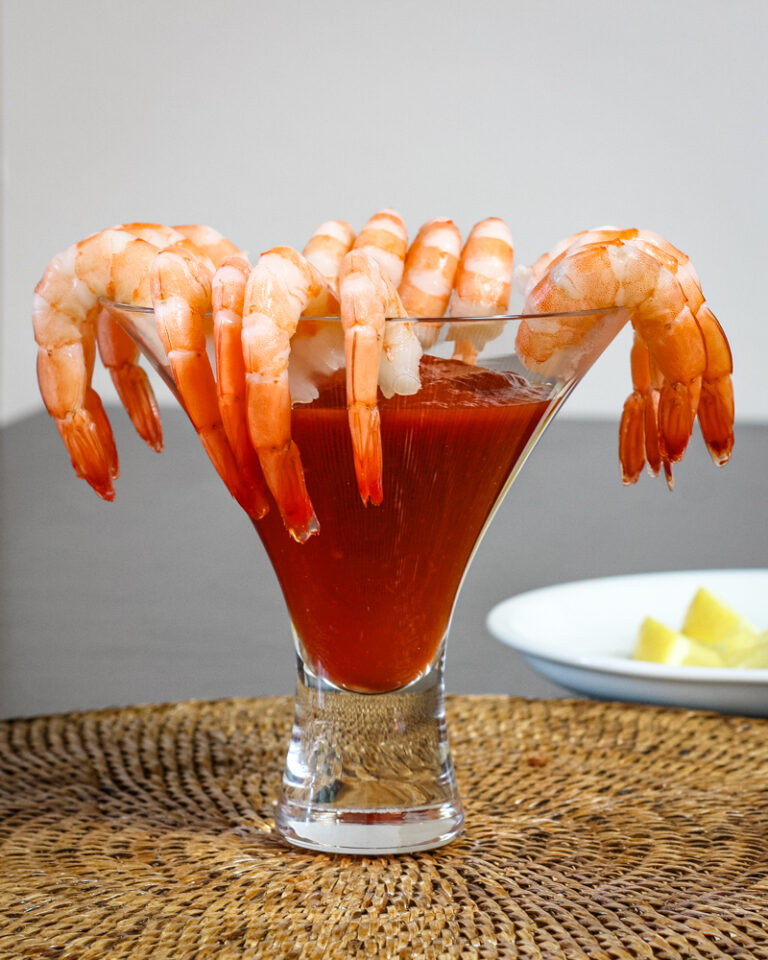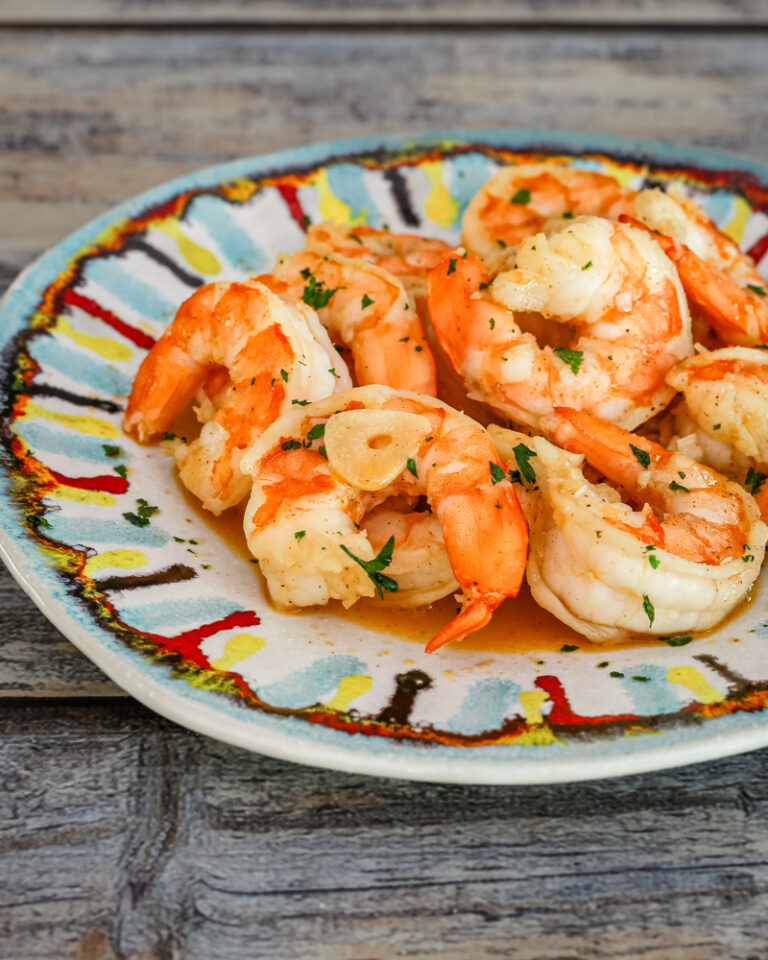Shrimp Scampi With Pasta
Satisfy your cravings with this quick garlicky shrimp scampi. Serve the dish over pasta or rice for a fantastic dinner!
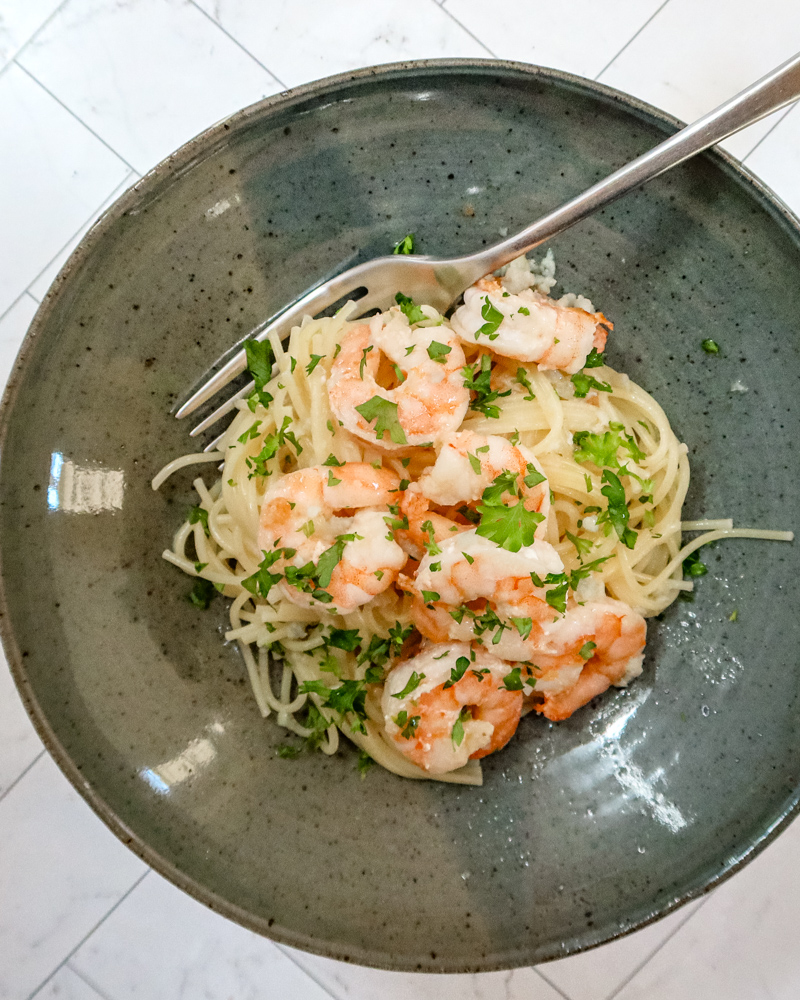
One of my go-to recipes is this homemade shrimp scampi. It can be served as a busy weeknight meal and is elegant enough for a dinner party or special occasion. I especially like to make it after a busy day when I have little time for prep work. It makes a delicious, satisfying meal when paired with cooked pasta or rice and a tossed salad. Feel free to customize the recipe to suit your taste.
Shrimp scampi has its roots in Italian cuisine. The dish is typically made by sautéing shrimp in butter and garlic and adding white wine, lemon juice, and other herbs and seasonings.
The word “scampi” actually refers to a specific type of crustacean. However, when Italian immigrants brought the dish to the United States, they began using shrimp instead of langoustines because they were more readily available and affordable. As Italian cuisine became more popular in the United States, shrimp scampi became a staple on menus in Italian restaurants across the country.
Shrimp scampi is still a popular dish with home cooks and restaurant chefs. The popularity of shrimp scampi has been consistent, and it will likely remain a favorite seafood dish for many years. While the basic recipe has remained the same over the years, many variations include additional ingredients such as tomatoes, mushrooms, and spinach. Some recipes suggest adding cream or cheese to create a more decadent sauce.
What You’ll Like About This Dish
Fast and flavorful. A skillet meal that comes together quickly with bright garlic and lemon.
Simple ingredients. Shrimp, butter, wine, lemon, and pasta—easy to find and delicious.
Perfect for weeknights. Quick cooking shrimp make this a go-to meal any night of the week.
Ingredient Notes
- Pasta: Angel hair or linguine both work well; cook just until tender.
- Shrimp: Use large peeled and deveined shrimp for quick, even cooking.
- Olive oil: Helps the shrimp brown slightly while adding flavor.
- Butter: Creates a rich, velvety sauce.
- Garlic: Fresh garlic is essential for the classic scampi flavor.
- White wine: Adds depth; choose a dry variety like Sauvignon Blanc or Pinot Grigio.
- Lemon juice: Brings brightness and acidity to the sauce.
- Parsley: Adds freshness and a pop of color.
- Crushed red pepper flakes: Optional, for gentle heat.
Steps to Make Shrimp Scampi With Pasta
- Cook the pasta in salted water and drain.
- Season the shrimp with salt and pepper.
- Sear the shrimp in olive oil until just cooked; remove from the skillet.
- Melt butter in the skillet and sauté the garlic briefly.
- Add the white wine and lemon juice; simmer to reduce slightly.
- Stir in butter, parsley, and red pepper flakes.
- Return the shrimp to the skillet and coat in the sauce.
- Serve the shrimp and sauce over hot pasta.
Tips
- Use freshly pressed garlic for the best flavor.
- Remove the shrimp as soon as they turn pink to avoid overcooking.
- Add a splash of pasta water if you want a looser sauce.
- Finish with extra lemon juice or parsley for brightness.
Recipe Variations
- Spicy scampi. Add more crushed red pepper or a pinch of cayenne.
- Garlic lovers. Increase the garlic for a bolder sauce.
- White wine–free. Replace the wine with chicken broth and a bit of extra lemon juice.
- Scampi with vegetables. Add spinach, cherry tomatoes, or asparagus.
- Creamy scampi. Stir in a splash of cream for a silkier sauce.
Serving Suggestions
- Serve with pasta or rice to soak up the sauce.
- Pair with crusty bread to mop up the garlicky butter.
- Add a green salad for a lighter meal.
- Garnish with lemon wedges or extra parsley.
How to Store
Refrigerate: Store leftovers in a covered container for up to 2 days.
Freeze: Freezing isn’t ideal since shrimp can become rubbery.
Reheat: Warm gently in a skillet over low heat, adding a splash of broth or water to loosen the sauce.
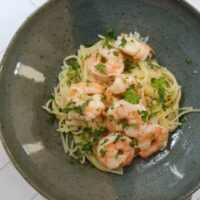
Shrimp Scampi With Pasta
Ingredients
- 8 ounces angel hair pasta, or linguine
- Kosher salt and freshly ground black pepper, to taste
- 1 pound shrimp, large, peeled and deveined
- 2 tablespoons extra-virgin olive oil
- 4 tablespoons unsalted butter, divided
- 4 large garlic cloves, pressed
- 1/3 cup dry white wine, e.g., sauvignon blanc, unoaked chardonnay, or pinot grigio
- 1/3 cup lemon juice, fresh-squeezed from 2 large lemons
- 1/4 cup fresh parsley, chopped
- Optional: 1/4 to 1/2 teaspoon crushed red pepper flakes, or to taste
Instructions
- Fill a large saucepan with 3 quarts of water and add 1 tablespoon of salt. Bring the water to a boil over high heat. Add the pasta to the boiling water and reduce the heat to medium to maintain the boil. Cook following the package directions. Drain well.
- Meanwhile, while the pasta is cooking, prepare the shrimp. Season the shrimp with salt and pepper.
- Heat the olive oil in a large skillet over medium-high heat. Add the shrimp and cook until pink and opaque, about 2 to 3 minutes per side, using tongs to lift and turn them. Remove the shrimp from the skillet and set aside.
- Using the same skillet, reduce heat to medium-low and melt 2 tablespoons of butter. Add the pressed garlic and cook, stirring constantly, for 1 to 2 minutes or until fragrant. Avoid browning the garlic.
- Stir in white wine and lemon juice and bring to a simmer. Cook for 2 to 3 minutes, allowing the alcohol to reduce a bit and the flavors to meld.
- Add the remaining 2 tablespoons of butter, chopped parsley, and crushed red pepper flakes, if using. Stir until the butter is melted and the sauce is smooth.
- Return the cooked shrimp to the skillet and toss it gently to coat with the sauce. Cook until the shrimp is heated through, about 1 to 2 minutes.
- Serve shrimp scampi over the hot cooked pasta and drizzle with extra sauce.
Nutrition
Disclaimer:
Our nutritional information is based on a third-party application that analyzes the ingredients list to determine the values. The information is meant to be helpful, but should be considered an estimate. Values may differ depending on measurements, brands, serving variations, and database availability.

